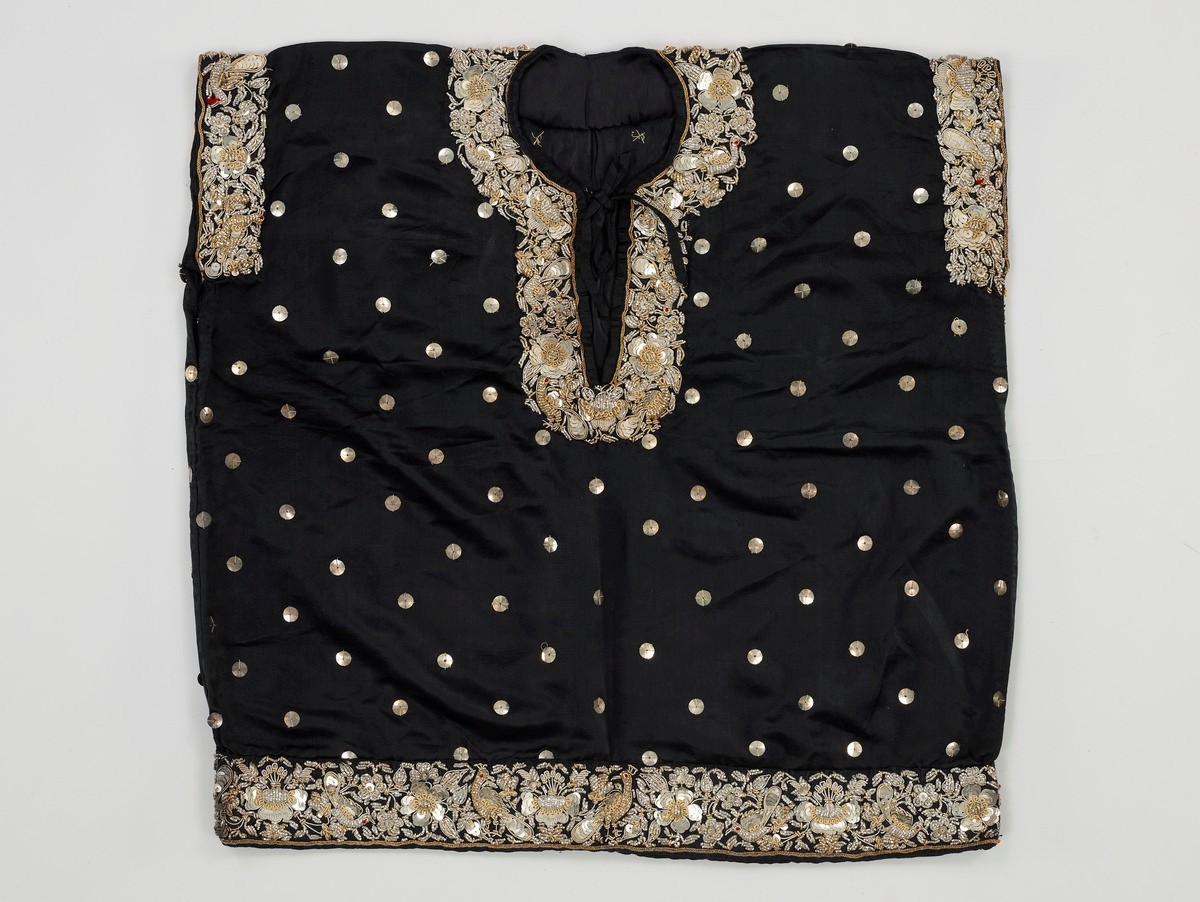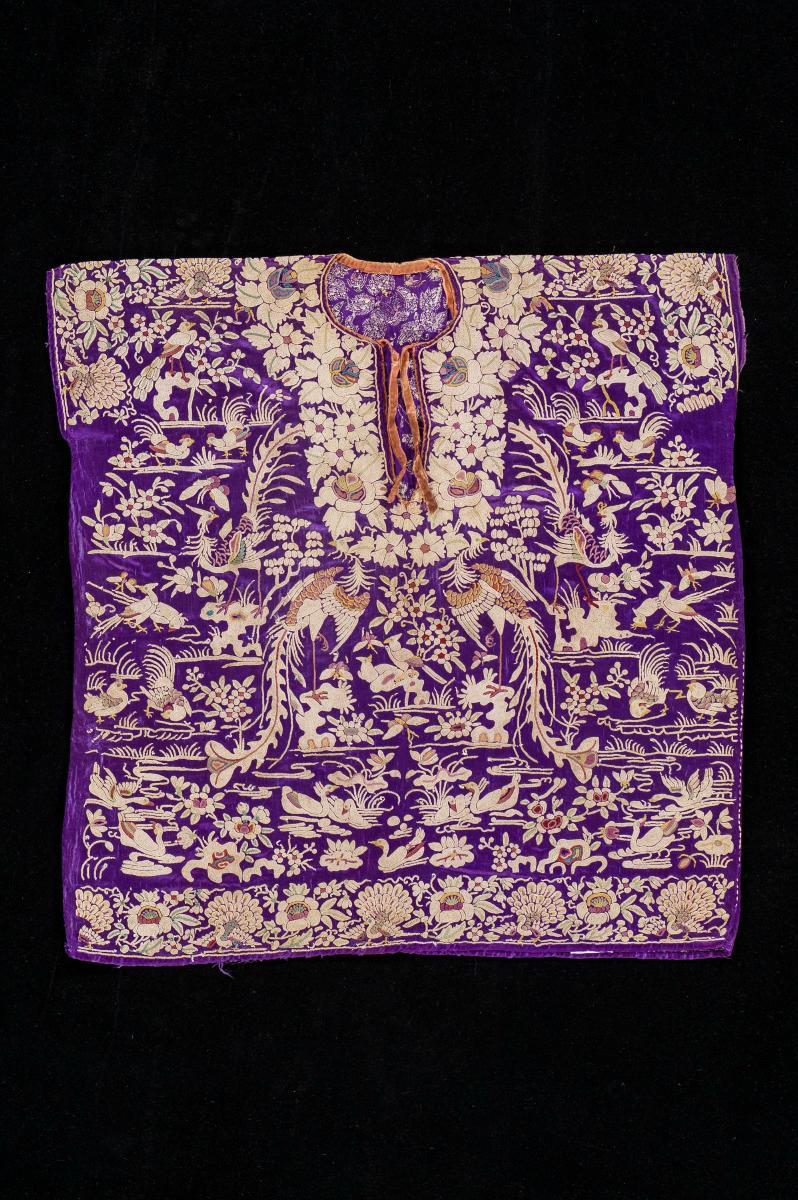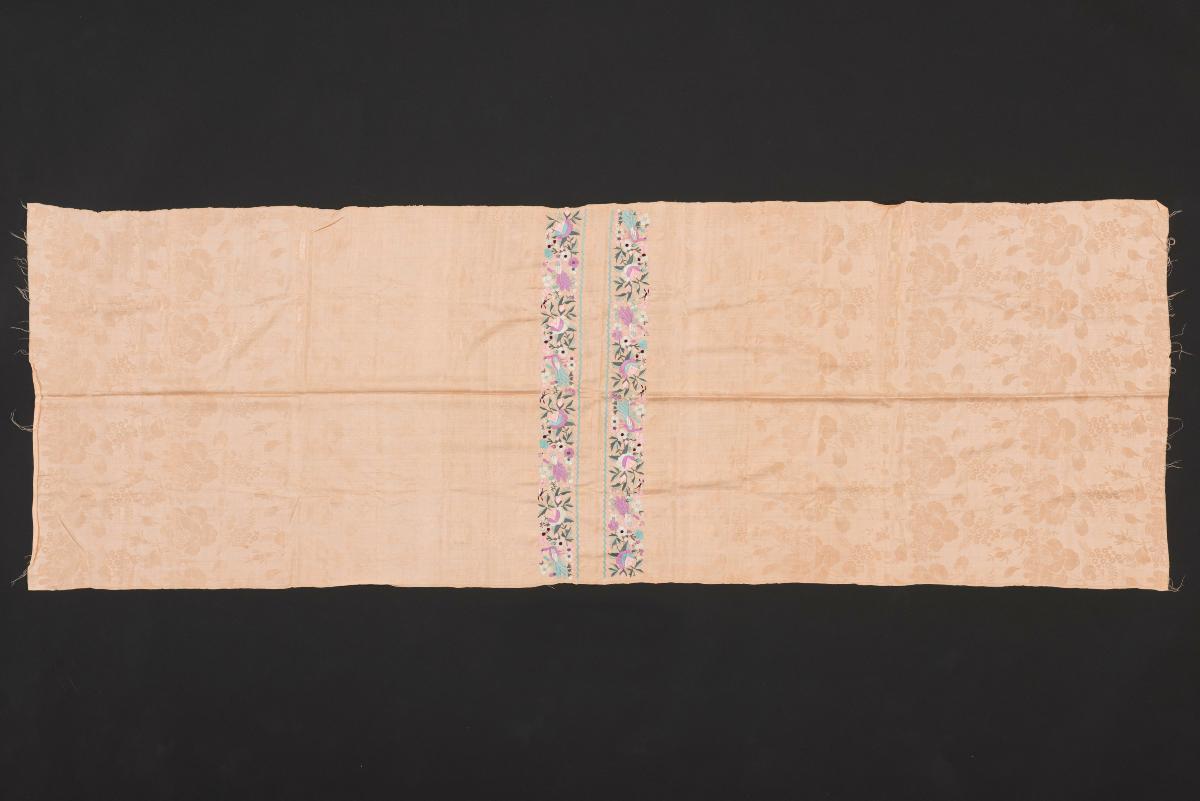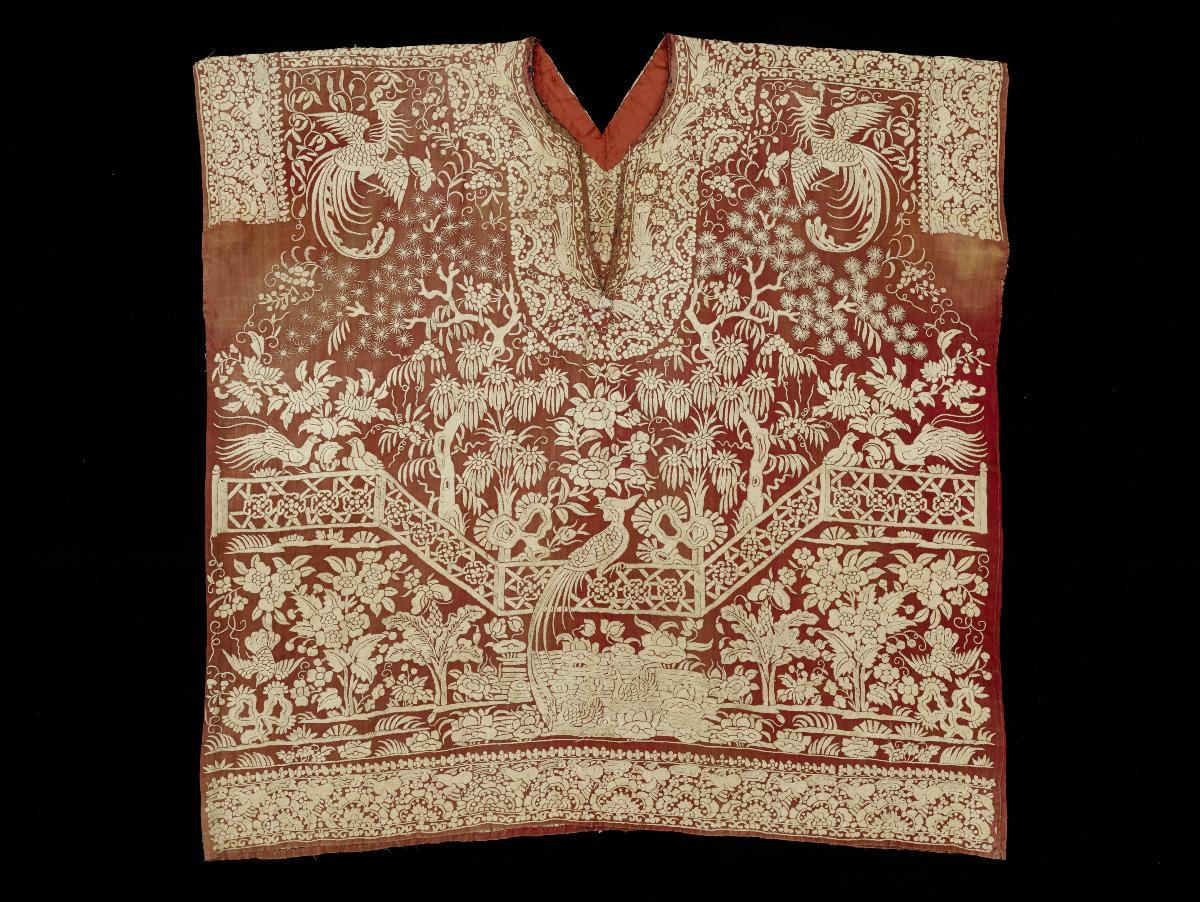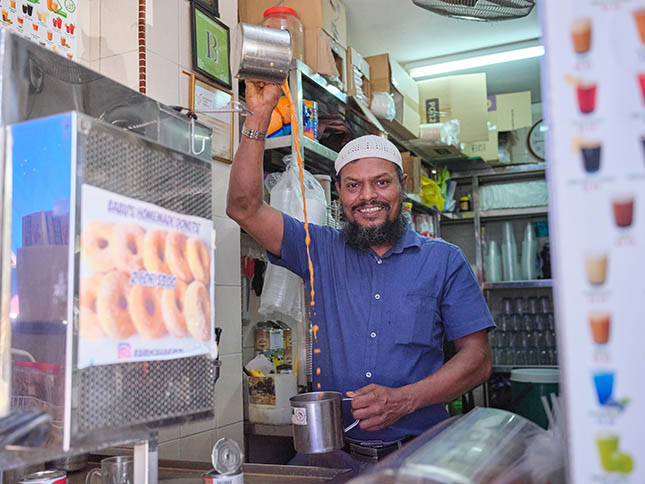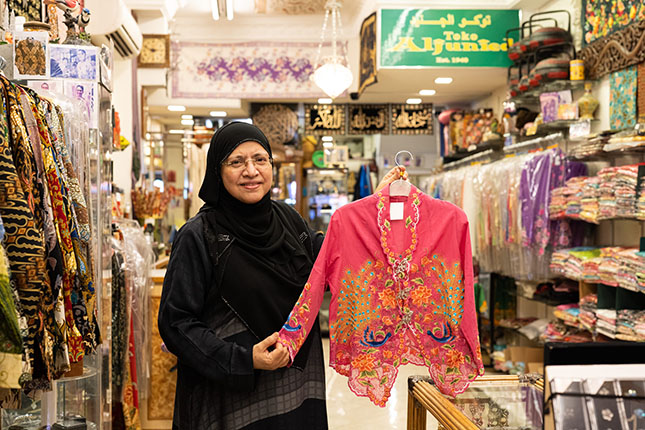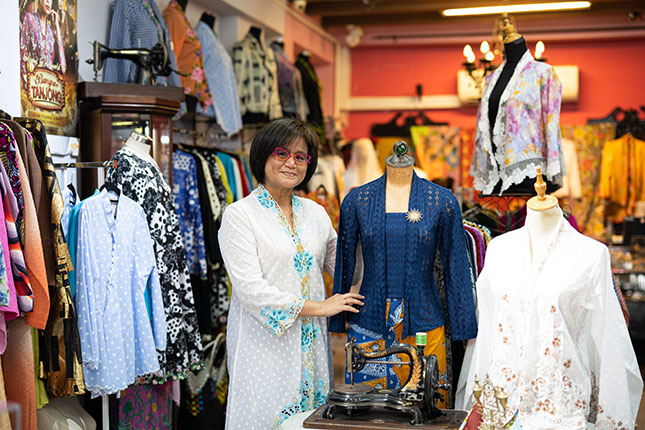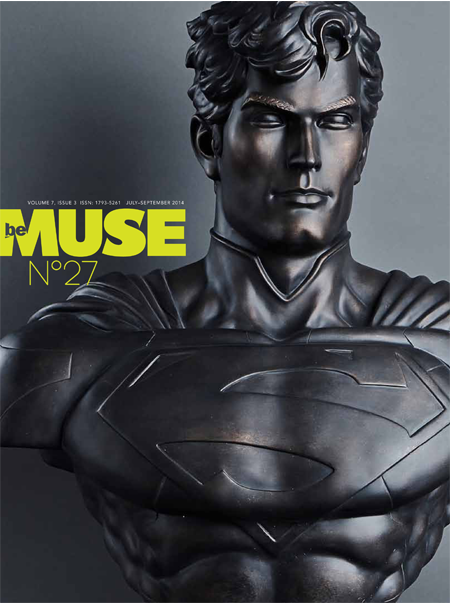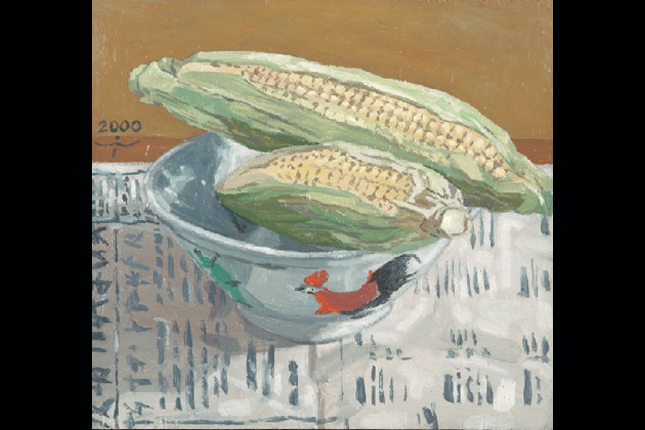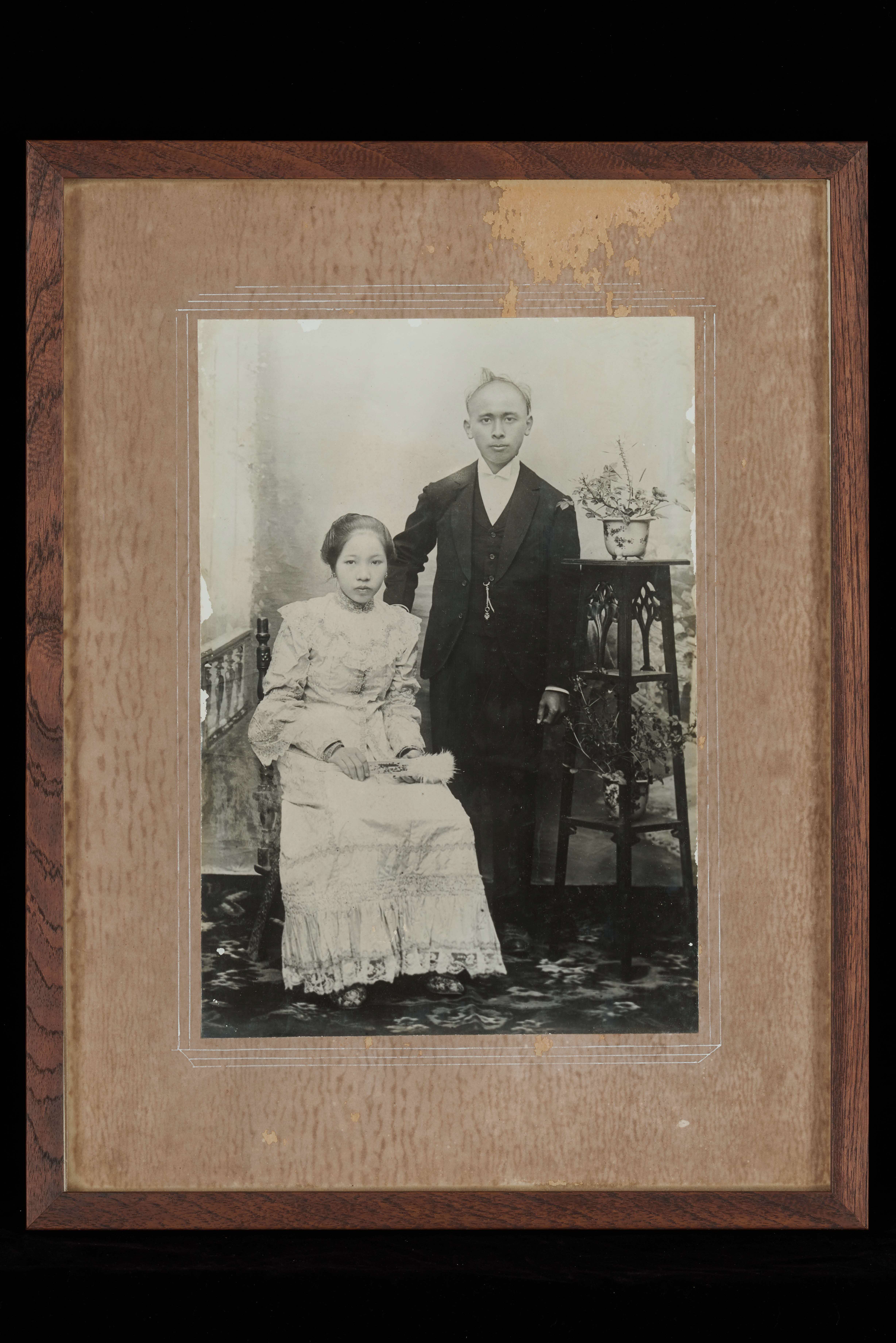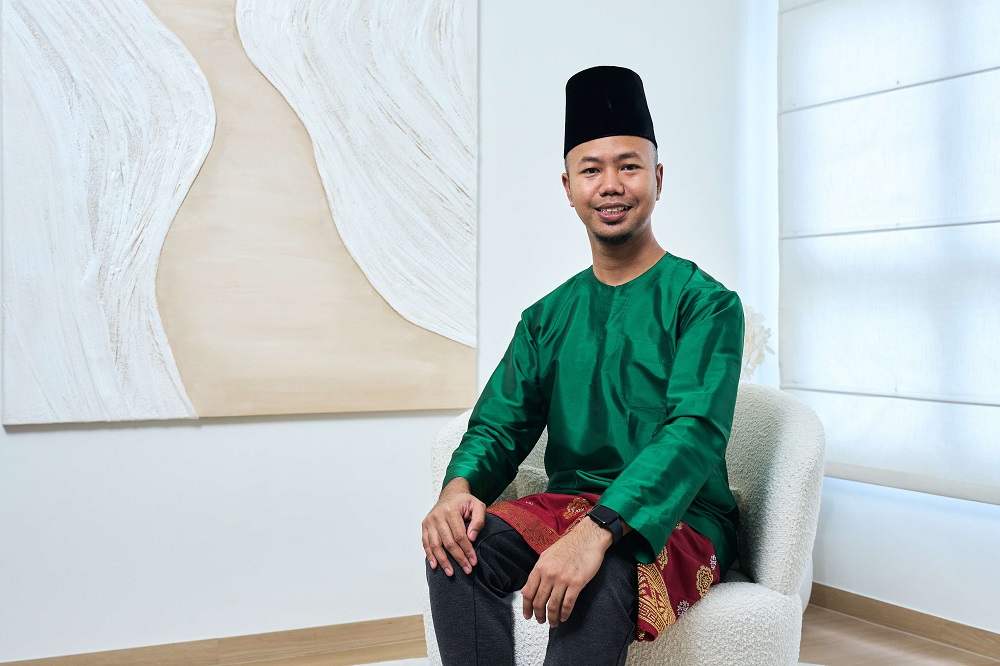A jhabla is a Parsi child’s tunic or vest worn as part of their traditional costume. This one is decorated with metallic sequins and rich Zardozi embroidery in gold and silver threads around the armholes, neckline, and hem. The rich decoration includes flowers, vines, and pairs of peacocks, their eyes highlighted with red thread. It would have belonged to a Parsi family in either Gujarat, Northwest India or Bombay (Mumbai) in Western India. Some jhabla were embroidered in China and brought to India by Parsi merchants who traded in opium, tea, and silk. Chinese silk embroidery was in great demand by the Parsi community of Gujarat and Bombay. This jhabla was produced in India but the embroidery is ostensibly Chinese in style, for example, the peacocks here are derived from the phoenix-like birds seen in Chinese embroidery. As China trade brought affluence to the Parsis, they proudly highlighted these connections through displays of Chinese goods, which became status symbols.




